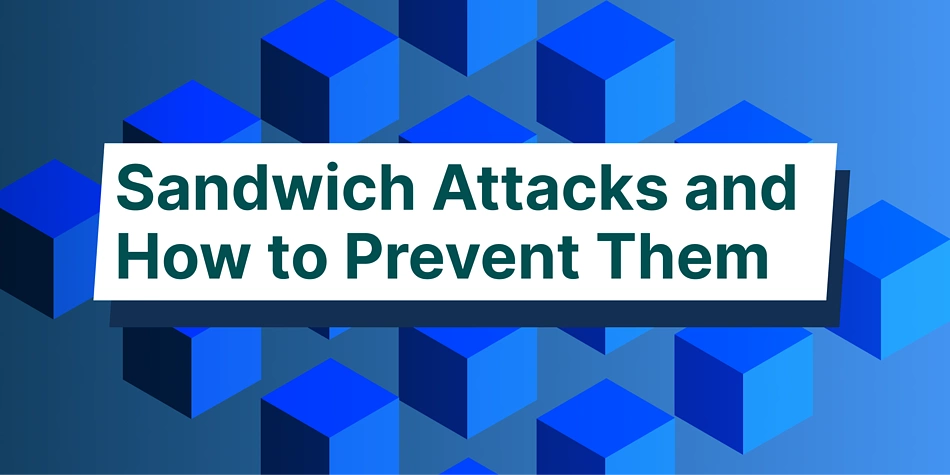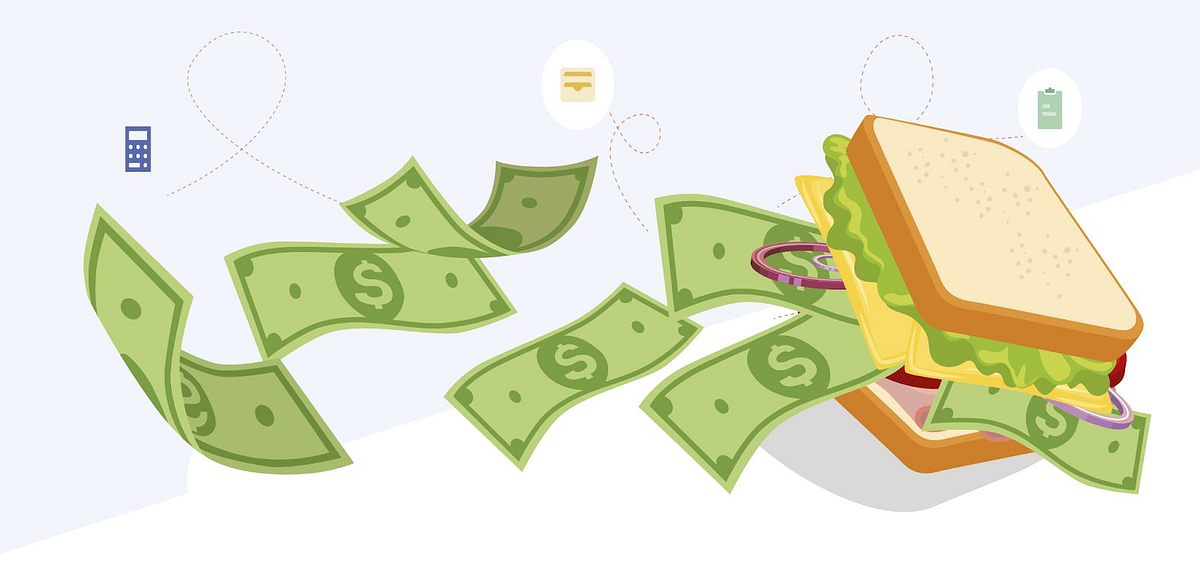
Sandwich Attacks in Crypto and How to Protect Yourself
In the world of cryptocurrency, sandwich attacks might not be as well-known as other typical DeFi hacks and frauds like rug pulls or flash loan attacks. But they are problematic for the DeFi ecosystem, particularly for trading platforms, because of their dishonest character.
We will discuss what a sandwich attack is, how it occurs, and how to prevent it in this article.
A Sandwich Attack: What Is It?
A sandwich assault is a type of market manipulation used on Decentralized Exchanges (DEXs) in DeFi markets. A malevolent actor spots a sizable pending transaction and strategically inserts two transactions around it, one before and one after the intended transaction.
The attacker raises the asset's price by buying it prior to a big transaction, which boosts its value. Shortly after the transaction, the attacker sells the asset for a higher price, profiting handsomely from the price differential.
Depending on the liquidity of the network, a sandwich assault may or may not affect your trades. Even a modest front-run purchase can have a big impact on the price in low liquidity situations, pushing the desired transaction to execute at a higher price. Sandwich assaults, on the other hand, are more expensive for the attacker in high liquidity conditions since it takes more money to shift the price.
How Do You Launch a Sandwich Attack?

Imagine a trader who places a sizable purchase order and wishes to exchange digital asset X for asset Y. After that, this order is sent out to the blockchain and is kept waiting for block confirmation in the mempool for a while.
When a trading bot notices a pending transaction, it initiates a front-run transaction by purchasing asset Y prior to the original transaction being confirmed. By making this acquisition, asset Y's value rises and the slippage tolerance is increased to its highest point.
Consequently, the trader unintentionally purchases asset Y at a greater cost. The trading bot then takes advantage of the discrepancy by backtracking and selling asset Y at this inflated price.
A basic illustration
The goal of putting these two orders close to pending transactions is to influence asset values.
First, the attacker purchases the asset the user is switching to, anticipating that the price of ETH will increase (e.g., by exchanging LINK for ETH). The victim must pay a greater price for ETH because the attacker buys it at a lower price. After that, the attacker sells ETH for this higher price.
The original user will receive less ETH as a result of this transaction sandwiching. As the attacker fills their order at a favorable price, the next trade costs more. The attacker can profit by outwitting the trader and generating a false price spike as a result of this sequence, which raises the price of ETH.
How Can You Protect Yourself and Prevent Sandwich Attacks?
Establish a Low Slippage
In erratic cryptocurrency marketplaces, slippage is the discrepancy between projected and actual transaction prices. Consider it similar to a rollercoaster, where the costs can fluctuate quickly. Your transaction will only go through if the token price stays inside a specific range if you select a low slippage. Your order will be canceled to safeguard your tokens in the event that an attacker attempts to manipulate the price above your threshold.
Employ Greater Liquidity Pools
Select bigger pools of liquidity for your dealings. These pools reduce the price swings from individual deals, which promotes trading stability. It takes a significant amount of wealth to manipulate a huge liquidity pool, which serves as a deterrent to attackers.
Experiencing Increased Gas Prices
For larger trades, think about paying greater gas fees. Even though it costs more, it speeds up your transaction, making front-running attacks more costly. Your assets may be better protected by this extra security step.
Make Use Of Telegram Bots

Telegram bots for cryptocurrency can automate and swiftly complete trades. Certain bots are designed to guard against sandwich assaults by withholding transaction information until the bot executes, which stops malevolent bots from leading the charge. But use caution—bots have access to your private keys and can pose a security concern.
Employ an RPC Private Network
Your pending transactions are hidden from possible attackers via a private RPC network, which stops them from searching the mempool for targets. This gives your trades an extra degree of secrecy.
Manage Your Own Network
You have more control over transactions when you run your node, which lessens your dependency on other platforms. You are in charge of the time and processing of your transactions, and you can submit them directly.
MEV Restrictor
A free RPC endpoint called MEV Blocker is intended to shield your trades from MEV attacks. It routes your transaction via a network of searchers who aren't able to front-run your trades but can spot back-running chances. By adding MEV Blocker to your wallet, you may improve the security of your trades.
Automata
Fair trade practices are the focus of research organization Flashbots. Include them in your wallet to take use of features like transaction prevention and protect yourself from MEV bots who try to front-run you.
Read Also: Understand The Impact Of Bitcoin Halving
The Solana Foundation's Tight Response to Sandwich Attack

Due to their participation in sandwich attacks against users, a group of validator operators has been kicked off of the Solana Foundation's delegation program. Tim Garcia, the lead for Solana Validator Relations, made the announcement on Discord. The judgment is final, and more of these operators will be the target of future initiatives. The co-founder of Helius, a Solana RPC provider, Mert Mumtaz, emphasized that this action shields retail users from validators who take use of MEV (Maximum Extractable Value) techniques.
When transaction ordering is manipulated by validators for financial gain, such as through front-running and sandwich attacks, MEV problems occur. For users, these exploits result in increased expenses and slippage. The foundation's dedication to network integrity and user protection is demonstrated by this action. In order to manipulate pricing and profit, an attacker uses sandwich attacks, inserting transactions between the victim's transaction and their own.
In a May 7 Discord post by Garcia, the Solana Foundation had previously established guidelines against such attacks and threatened to eject offenders along with their investment. Validators are given SOL tokens by the Solana Foundation Delegation Program in exchange for their performance and adherence to best standards.
Since Solana is a permissionless network, operators that have been kicked off can still use the blockchain, but they will no longer be able to access SOL that has been staked by the foundation.


